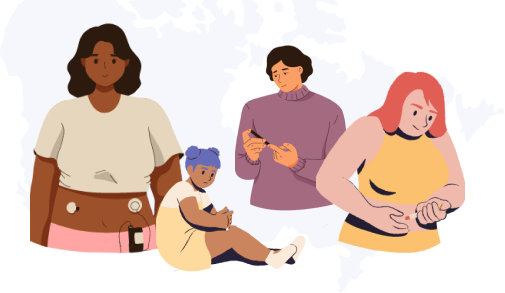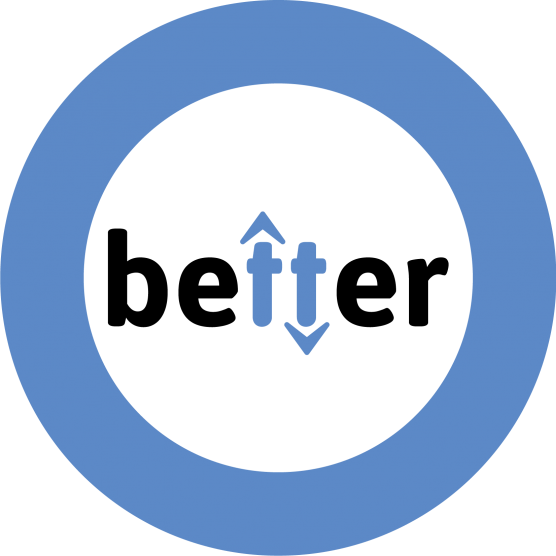There are many misconceptions about type 1 diabetes (T1D). People with T1D are thought to be eating too much sugar, to be sedentary, to be overweight, etc. Have you ever experienced this with people you know?
These misconceptions often derive from inaccurate information, rumours, a lack of knowledge about T1D or confusion with type 2 diabetes (T2D).
Whether you understand T1D well or not, it can be difficult to explain it to other people.
Here are a few simple ways to break it down for people you know.
Why is it so confusing?
T2D is the most common type of diabetes globally, and it represents close to 90% of all diabetes cases. This is why T1D is often confused with T2D, even though they are very different conditions. Think of it as the difference between downhill skiing and cross-country skiing: they both involve skis, but they are two completely different sports.
What is type 1 diabetes?
In type 1 diabetes, the pancreas no longer produces insulin, which the body needs to regulate blood sugar levels and keep you alive. This is why people with T1D inject insulin.
Think of it as the difference between automatic and manual car transmissions. With an automatic transmission (or a functioning pancreas), the gears shift automatically, so you can drive without even thinking about it (or your blood sugar is automatically regulated by your pancreas without you noticing). With a manual transmission (or T1D), you need to work the clutch pedal and the stick shift to keep on driving (or manually manage your blood sugar every minute of every day for the rest of your life).
Is lifestyle a risk factor for type 1 diabetes?
NO! Eating too much sugar, having a sedentary lifestyle or being overweight doesn’t cause T1D. Type 1 diabetes is diagnosed before the age of 25 in most cases, but it can be diagnosed at any age.
Type 1 diabetes is an autoimmune disease, which means that the immune system attacks itself—as though there were an infection to fight—and destroys insulin-producing beta cells in the pancreas. It’s not known what exactly causes this abnormal attack.
Is type 1 diabetes a genetic or hereditary disease?
Not necessarily. While part of the risk is genetic, an environmental factor such as a viral infection or stress is needed to trigger it. Not many people with T1D have any close or distant relative who also have T1D. The causes are unknown, so there is no way to prevent it. Anyone can be diagnosed with T1D.
What foods are off limits?
NONE! There are no food restrictions, as long as the insulin dosage is adjusted accordingly. Restricting or avoiding certain foods will not fix a pancreas that stopped working, so there’s no point. But eating healthy is always encouraged and provides many benefits for your overall health.
Is it easy to live with type 1 diabetes?
Living with T1D is hard work. It requires constantly managing your blood sugar, maintaining good health and watching everything you do, since almost anything can cause blood sugar fluctuations.
For instance, imagine that all day, every day, you have to do the following:
- Check your blood sugar regularly.
- Manage your blood sugar to ensure it’s neither too high nor too low.
- Count carbs every time you eat or drink something and calculate the insulin dose that you need.
- Manage the different impacts that eating, drinking, moving, having emotions, not sleeping enough, being sick, etc. will have on your blood sugar.
- Stay alert and act very quickly (i.e., consume sugar) in case of hypoglycemia to avoid losing consciousness.
These are only examples of how burdensome and difficult it is to manage this condition.
Type 1 diabetes comes with a heavy mental load, although each person experiences it differently. It’s almost like a full-time job, but without any days off or relief.
There are risks for the mental and physical health of people with T1D, but these risks are increasingly well known and managed when needed. It is recognized that people with T1D are full and active members of society.
How can I help people with T1D?
There are many ways you can help!
Here are some examples:
- Look for resources to learn more about type 1 diabetes. (More articles)
- Know the signs and symptoms of hypo- and hyperglycemia and what to do in case of emergency (e.g., know how much sugar to give, learn how to administer glucagon).
- Understand what it means to manage T1D (e.g., checking blood sugar levels, having to eat a meal or a snack at any given time, feeling weary of having to constantly be in control).
- Refrain from giving unsolicited advice. People with T1D know what to do and are used to manage their blood sugar (e.g., a person with T1D is not being irresponsible if they eat a sugary dessert!).
Obviously, there are endless ways to help. A good way to find out how you can help is simply to ask questions and listen to a person with T1D or the parent of a child with T1D, and they might let you know what they need.
Participate in the BETTER registry!

First registry of people living with T1D in Canada.
Learn More








